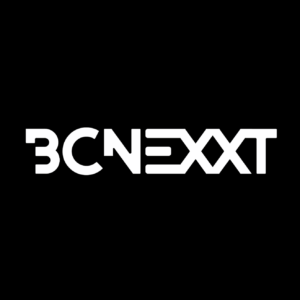EBUCorePlus, a Common Metadata Integration Framework
Emilio L. Zapata, Founder, Tedial
Digital transformation in the Media and Entertainment (M&E) market involves many applications that need to exchange content and metadata (data) in a fluid and efficient manner. For media companies operating in today’s digital world, producing, managing and distributing content requires an efficient and agile media supply chain, where metadata impacts all of these processes.
One of the critical challenges for software defined workflows and media services in the modern, fragmented media business lies in metadata, in particular ensuring that data associated with a software-defined workflow remains consistent as it progresses through the various stages of the media production and delivery supply chain. As the applications involved in software-defined workflows are designed without any common standard metadata model in mind, maintaining relationships between metadata is critical and can over-complicate the design of different media services. Ensuring that data from different sources or systems can be accurately mapped and consolidated, thereby facilitating a unified view of the data for analysis or operational use, is essential.
In an agile media supply chain data integration plays a crucial role in aggregating, transforming, and consolidating data from disparate sources, enabling businesses to derive meaningful insights and make informed decisions. By streamlining data flow between applications, systems, and databases, data integration in software defined workflows reduces manual data entry, minimizes errors, and improves overall operational efficiency of the media supply chain.
EBUCorePlus
An efficient media supply chain requires that tasks in a software-defined workflow must be able to communicate securely and unambiguously. At the level of the software components themselves, removing ambiguity requires common data models and data structures. Shared data models reduce errors caused by re-entering information and multiple translation steps, support a transition from manual communication to automated communication, and greatly simplify integrating new applications and processes.
In a media supply chain each application, tool and media service use only a few subsets of metadata, those that are necessary for its specific function. In most cases, applications and tools tend to have their own metadata terminology, without reference to any of the formal specifications of audiovisual data models, such as EBUCorePlus, NewsML, EXIF, etc.
An ontology defines a set of “things,” their properties, and the relationships between them, all within a particular area, scope, or domain. In practice, an ontology defines all essential objects and how they relate to each other. An ontology it is a data model and a set of defined terms for concepts in the media production and distribution processes. According MovieLabs, the ontology becomes the language of building repeatable software defined workflows; once it can be articulated, it can be constructed. Its more immediate use is as a common communication mechanism among applications and services that know similar things (asset, format, rights, etc) but don’t know how to communicate those things to each other and therefore can’t work together.
EBUCorePlus is an ontology for media enterprises, developed as an open source project. It provides the framework for descriptive and technical metadata for use in service orientated architectures and audiovisual ontologies for semantic web and linked data developments.

https://tech.ebu.ch/metadata/ebucoreplus
EBUCorePlus aims to serve as a plug-and-play framework. It can be used out of the box, either in its entirety or just a subset of its elements. But it may also be adapted and extended to enterprise-specific needs. It is not required to adopt the ontology completely. The benefit of using EBUCorePlus arises from combining well-defined modelling proposals with your use case-specific decisions. Especially for system integration tasks and defining requirements, projects benefit from EBUCorePlus as a business – not technology-oriented language.
EBUCorePlus provides a flexible metadata framework that we can structure into multiple microservices, including editorial (Dublin Core), rights, strata (timeline markers), relations, technical, collections, mediafile, delivery catalog, acquisitions, and a robust search engine. This modularity simplifies the application integration framework and the design of an agile media supply chain because each application only needs to support a few microservices.
If we want media supply chains to operate in an automatic integrated environment, we will have to establish a common metadata framework and equip each application with a translator that allows data to be exchanged during the execution of a software-defined workflow. Our experience shows that EBUCorePlus is extremely useful for establishing a metadata integration framework, enabling interoperability and compatibility between applications, and acting as a shared data model between media applications participating in software-defined workflows.
iPaaS for Media Supply Chain
Digital transformation in the M&E market is tied to the efficiency of software-defined workflows and software-defined storage, which demand flexible integrations. Building application integrations is one part of the story; how you manage, monitor, and add new integrations is the main part of the challenge. For instance, integrations created by custom code can only be understood or monitored by senior developers or professionals with coding expertise. On the other hand, integrations created by plugins increase your third-party dependency when looking to modify or troubleshoot your integrations. The more software connections you add with custom code, the more data silos get created and the more entangled your media supply chain is likely to become.
To integrate multiple such applications while ensuring real-time data exchange in an agile media supply chain, modern businesses are implementing a next-gen middleware solution called the iPaaS (integration Platform as a Service). It is designed to provide a more holistic and agile way to create, manage, and monitor integrations from one platform. In fact, one of the reasons why M&E organizations and system integrators use iPaaS solutions is because it helps dramatically simplify and speed up the development and management of integrations. Developed to transcend the limitations of plug-in based integrations or point-to-point, custom coded integrations, iPaaS provides advanced integration features that enable a wide variety of business use cases. This helps businesses go beyond merely integrating applications and helps them orchestrate entire, process automation ecosystems from one user-friendly web interface.
Data mapping and transformation are critical components of a strong data integration strategy for an agile media supply chain. iPaaS solutions offer robust mapping capabilities, enabling M&E organizations to align and harmonize data from disparate sources. Whether it is reconciling product information across multiple systems or standardizing data formats for consistency, iPaaS solutions facilitate seamless data mapping and transformation, ensuring the accuracy and reliability of integrated data. By maintaining high-quality data throughout the integration process in the media supply chain, M&E organizations can trust the insights derived from integrated data and make informed decisions based on reliable information.
Data integration is the process of unifying datasets from multiple sources to provide a single view of the data for workflow automation, analytics and operational intelligence. EBUCorePlus is extremely useful for establishing a metadata integration framework, acting as a shared data model among the applications involved in a media supply chain. iPaaS cloud data integration tools, combined with EBUCorePlus, standardize the way new applications are added and existing applications are integrated across enterprise M&E’s various content production and delivery services, making it easier to move all types of data across applications, while providing the necessary integration functionality as well.
EBUCorePlus embracing NoCode
Content production, archive and distribution is at the core of the digital transformation of M&E organizations; different parts of it have their own sets of ideas and words for those ideas, and often the same word means different things in different circumstances. For automation to succeed, there must be common metadata models that are understood across the many components of the production, archive and distribution workflows.
Building a strong data integration strategy with iPaaS solutions is paramount for M&E organizations seeking to leverage their data assets effectively. iPaaS solutions, using a standardized metadata integration framework such as EBUCorePlus, offer a comprehensive approach to data connectivity, transformation and synchronization, enabling companies to optimize their operations, improve decision making and gain a competitive advantage in the M&E market, designing an agile and scalable media supply chain.
The advantages of using EBUCorePlus in a segmented set of services is clear, but it can be useless without the proper tools to manage and maintain the EBUCorePlus metadata model in the different applications and services. And it’s here where a NoCode approach plays a key role. A platform where configuring and deploying the EBUCorePlus metadata model has to be done via scripting or editing internal configuration files, or even directly in the database is useless, and users won’t take all the advantages of the metadata model as they won’t be able to manage it efficiently or add new EBUCorePlus objects according to their business needs.
Using NoCode graphical tools as form, metadata, UI and workflow editors where non-technical users are configuring the EBUCorePlus objects easily and more importantly, defining how they will be presented in the UI, establishing visibility rules, permissions, etc. is key when adopting the EBUCorePlus metadata model.
As more and more M&E organizations demand cross-enterprise data integration to build an agile media supply chain, the market is now ripe for an all-in-one data integration platform, supporting all styles of data integration. By defining integration objectives, choosing the right iPaaS solution with a standard metadata framework like EBUCorePlus, enabling interoperability and compatibility between applications in software defined workflows and leveraging its capabilities, M&E businesses can build a strong data integration strategy that propels them toward success. This is the key to the huge success iPaaS has had since 2021, which Gartner introduced as a new essential integration tool to implement agile supply chains.









